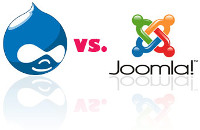Page 46
Think Green in the IT Industry
Posted on August 27th, 2013 by Boyana Peeva in Tech
Being Green...
Being green or eco-friendly has become such a catchphrase that it has lost some of its meaning, and while companies still try to green up their act, many fall short of their goals. Reducing your carbon footprint is great, but when it comes to running a business in the IT industry, there are some things you can and cannot do when trying to cut back on energy use and carbon output. If you owned a restaurant and someone talked to you about reducing your carbon footprint and going green by shutting off your ovens, broilers, and anything else that used natural gas, you would probably look at them sideways and walk away without saying anything. Your IT-based business works in much the same way with your servers, computers, and other devices that have to have their power on for your business to work properly. At the same time, there are plenty of ways to cut your energy costs while making your business as green as a landscaping company.
Is In-House or Remote Network Monitoring Best for Your Business?
Posted on August 21st, 2013 by Jonathan in
Whether you’re looking at your business computing network from the perspective of your customers or with an internal intranet system in mind, it is important that you have the necessary level of monitoring in place so that you can deliver a satisfactory experience 100% of the time. The choice faced by businesses boils down to whether they wish to come up with an in-house monitoring plan, or outsource this function to a remote company or operator.
Applications to Backup Your Computer Data
Posted on August 16th, 2013 by Boyana Peeva in Tech
Your data on your business computer is some of the most important documents you currently have, especially now that many businesses rely on digital storing of documents and information rather than having physical documents in a real life filing system. Because of this change of how we store and keep information, it is imperative to have some sort of safety net that can ensure all of your business computer data is backed up, saved, and stored somewhere safe that you can access just in case something happens.
Drupal vs Joomla? Pros and Cons
Posted on August 8th, 2013 by Boyana Peeva in Tech When it comes to managing all of your content needs, there are several platforms out there available to you. It doesn't matter if you need to manage several different authors writing all sorts of content or need a management system to keep track of everything as a small business. There are two in particular that have become quite popular: Drupal and Joomla. How exactly do they compare to one another as content management systems, and why should you choose one over the other?
When it comes to managing all of your content needs, there are several platforms out there available to you. It doesn't matter if you need to manage several different authors writing all sorts of content or need a management system to keep track of everything as a small business. There are two in particular that have become quite popular: Drupal and Joomla. How exactly do they compare to one another as content management systems, and why should you choose one over the other?
What are Drupal and Joomla?
If you ever worked with or seen WordPress, you already have a basic understanding of Drupal and Joomla. Both of them are known as CMS or Content Management System. However, both are unique because they are completely open-source and used by even huge brands and websites with thousands or millions of daily unique impressions. Some of the most prominent websites to use Drupal include Stanford University, Turner Broadcasting, and even the official website for the White House. In contrast, major websites like Citibank, Harvard University, and IHOP use Joomla.


 Copyright 2000-2026, WebSitePulse. All rights reserved.
Copyright 2000-2026, WebSitePulse. All rights reserved.